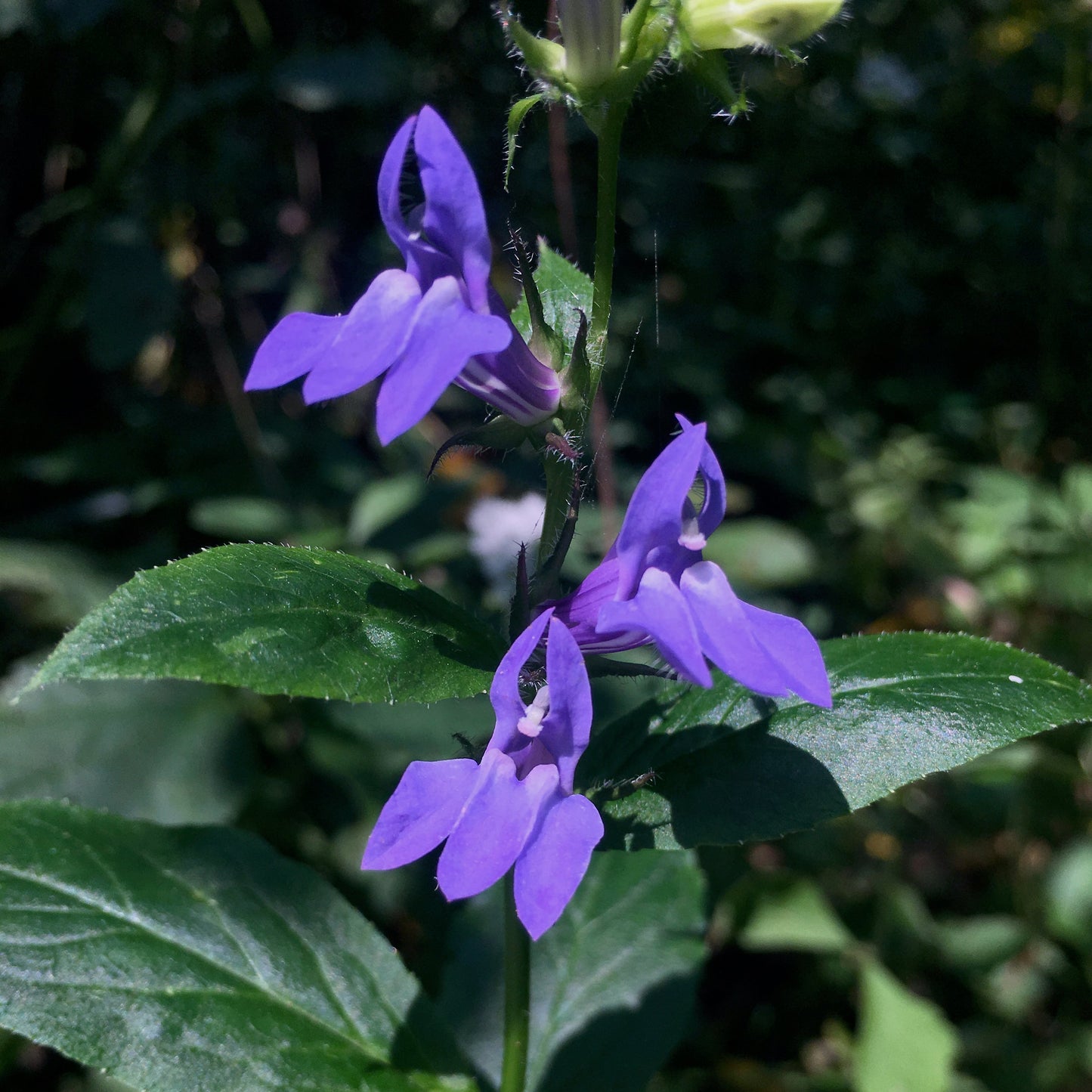Blue lobelia
Lobelia siphilitica
Lobelia siphilitica
Couldn't load pickup availability
Sun/shade: Full sun to part shade
Soil moisture: Medium to wet
Height: 2-3'
Flowering period: August
Deer resistance: Medium
Blue lobelia’s stately blooms provide a charming stage for their rough-and-ready pollinator, the bumble bee. Each flower possesses a central cavity into which bees crawl when seeking nectar. It is a delight to watch the bumble bees work, rummaging for nectar in spaces that seem much too dainty for them, their hind portions protruding conspicuously from the flower openings. Although bumblebees are the primary pollinators of blue lobelia, the plant attracts a variety of bees of varying sizes, as well as butterflies.
A plant of woodland borders, especially along rivers, blue lobelia is perfectly suited for partially shaded wet spots in the garden. The plant will also do well in full sun, as long as the soil isn’t too dry. A layer of leaf mulch can help to conserve soil moisture for this and other plants. Blue lobelia is a short-lived species and is not very competitive. In order to keep it coming back, allow for some bare soil next to the plant where it can deposit its seeds.
As a point of interest regarding local adaptation, some research suggests that the success of naturally occurring blue lobelia populations may be due, in part, to optimized interactions with co-occurring fungal communities. These interactions enhance the plant’s uptake of phosphorus, an important nutrient for growth and metabolism.
Photos by Julie Slater.



